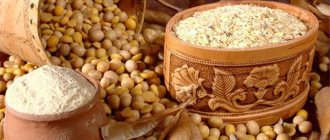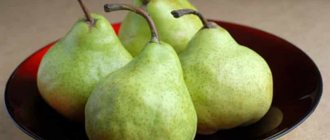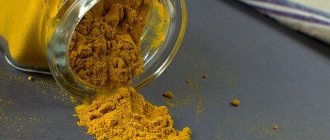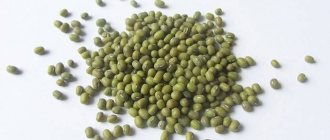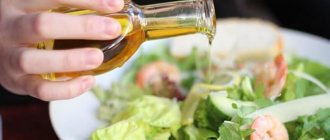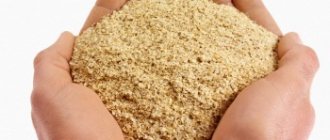Turnip is a dietary vegetable that is rich in nutrients. The plant contains a huge amount of microelements and vitamins that improve the functioning of all organs and systems of the human body. The main wealth of the vegetable is ascorbic acid. In terms of vitamin C content, turnips are superior to oranges and other citrus fruits. The root vegetable contains a lot of indigestible fibers, which prevent toxins from being absorbed in the intestines.
Fresh
Any vegetable contains the most beneficial substances in its fresh form. The energy value of raw turnips is 31.73 kcal per 100 g, which makes it a real boon for those who are struggling with excess weight. Nutritionists advise obese people to replace potatoes with turnips in all dishes, and to reduce the bitterness that raw root vegetables have to some extent, they recommend dousing them with boiling water before cooking. However, adding raw vegetables to your diet should be done with caution. Due to the presence of a number of contraindications to its use, it is advisable to first consult a gastroenterologist.
Sandwiches, salads are prepared with turnips, and they are combined with other vegetables or fruits when preparing fresh juices or smoothies. The Chinese eat root vegetables cut into thin strips and dried with soy sauce, and in Italy thin slices of the vegetable are smeared with honey or molasses, placed in a jar and left for a day in a cool place. The result is delicate transparent candied fruits.
“Vitamin” sandwiches are very tasty. Preparing them is very simple: spread lightly salted curd mixture on rye or bran bread, and decorate it with thin slices of black turnip on top. A smoothie can be prepared by grinding pieces of ripe turnip, cucumber and tomato in a blender and adding apple juice to the mixture.
Salads with raw turnips can serve as an excellent “accompaniment” for main courses. Here are several food kits for such salads.
| Option 1 | Option 2 | Option 3 |
|
|
|
Turnip for weight loss
Replacing potatoes in the diet promotes the same satiety, but without starch and carbohydrates, which lead to the formation of fatty tissue. Beneficial effects for losing extra pounds:
- diuretic;
- laxative.
Normalization of water balance, removal of excess fluid, good satiating ability with low calorie content allow you to avoid the feeling of hunger during the diet, which is only one. This nutrition system assumes for seven days:
- turnip is taken three times a day;
- 1 liter 300 milliliters – vegetable decoction.
Otherwise, there are no food restrictions, but you should avoid the following dishes:
- roast;
- spicy;
- fat;
- sweet;
- bakery.
You should also refrain from drinking salty mineral water; you should take food three times a day. An example menu is presented in the table:
| Stage | Menu |
| Breakfast | Vegetable salad with turnips/chicken egg/fruit |
| Snack | Cottage cheese |
| Dinner | Chicken/broth/salad/slice of black bread |
| Snack | Natural coffee + dark chocolate |
| Dinner | Fish+vegetables/tea (black, green) |
Despite the beneficial properties of the vegetable, do not forget about contraindications.
Salty
This vegetable can also be prepared for the winter; the easiest way is pickling. The energy value of salted turnips is from 28 to 37 kcal/100 g, depending on the variety.
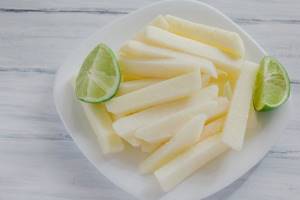
For pickling whole root vegetables, select small, ripe specimens without damage. They are thoroughly washed with a brush, the remaining tops and roots are cut off. Then they are placed in layers in a wooden barrel or a large enamel pan, each layer is sprinkled with salt, cumin, allspice and bay leaf. Pre-cooled boiled water is poured into the container so that it completely covers the contents. Place gauze or white cloth on top and apply pressure. After about a month, the pickled turnip is ready.
You can also use the express fermentation method. The recipe in this version is the same, but the root vegetables are peeled, cut into circles and placed in a glass jar. Fermentation lasts about two weeks.
Why do you need to know the chemical composition of this vegetable?
After turnips gave way to potatoes, they began to gradually forget about them. However, in connection with the latest research by scientists who discovered the antitumor properties of turnip, it began to gradually regain its position.
It is important to understand what substances are contained in this vegetable so that eating it does not harm the body. And vice versa: use root vegetables more actively if there is a deficiency of a currently needed microelement or vitamin, which can only be obtained from turnips. This information will also be useful for understanding the compatibility of turnips with other food products, not only in taste, but also in chemical composition.
Note: larger fruits have a bitter taste.
Pickled
You can also preserve this vegetable using vinegar, salt and honey or sugar. The calorie content of pickled turnips is the same as salted turnips, 28-37 kcal/100 g. Such canned food can be prepared in different ways, combining turnips with other vegetables and fruits, and using various additives and spices. Root vegetables are washed, cut into thick circles, and placed in jars along with the rest of the ingredients. Then pour in the pre-prepared marinade and cover with plastic lids. After two weeks of ripening, the canned food is ready for consumption. They should be stored in a cool place.
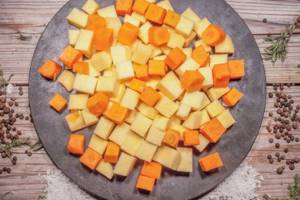
Here are some popular recipes for such canned food (calculation per 1 kg of the main product):
On honey
- 150 g honey;
- 30 g salt;
- 70 g fruit vinegar;
- 1 liter of water.
With beets and garlic
- 1 beetroot, sliced;
- 150 g fruit vinegar;
- 6 cloves of garlic;
- 5 tbsp. l. salt;
- 1.5 liters of water.
With apples and cinnamon
- 1 kg sour apples, cut into quarters;
- 200 g sugar;
- 50 g salt;
- 100 g fruit vinegar;
- 1 tsp. ground cinnamon;
- 1 liter of water.
Contraindications
Due to the high content of essential oils, there are a number of contraindications for consuming turnips.
Eating a large amount of vegetables out of habit can cause gas formation in the intestines.
People with the following health problems should not abuse the product:
- inflammation of the gastrointestinal tract;
- stomach and duodenal ulcers;
- gastritis of any type;
- malfunction of the thyroid gland;
- chronic liver and kidney diseases.
Patients with pancreatic diseases, including diabetics, can eat turnips only after the permission of the attending physician.
When consuming root vegetables, like any other medicinal product, you should observe moderation. It is enough to eat no more than 300 g per day. In order not to harm the body, improve the digestibility of the vegetable and prevent the formation of gases in the intestines, it is better to eat the product heat-treated - boiled or steamed.
Dishes
In addition to eating fresh, salted and pickled, turnips can be used to prepare many different tasty, satisfying dishes. It can be fried, stewed, baked, cooked in soups and purees. It is not for nothing that this vegetable in Rus', along with bread, served as the main food product.
Steamed
If we talk about culinary processing methods, the most simple dish is steamed turnips, the saying about the simplicity of which is known to everyone. At the same time, the vegetable retains a maximum of useful substances, and the energy value, compared to other heat treatment methods, is the lowest - 31.04 kcal/100 g.
In Rus', it was prepared after the baked bread was removed from the hearth of the oven. Then a cast iron pot or clay pot with whole root vegetables was placed in a still hot oven, and after half an hour a tender, tasty and satisfying peasant dish was ready. In wealthy homes it was served with sour cream, butter or honey.
Today, turnips are steamed in a gas or electric oven, microwave or slow cooker. The cooking recipe is simple: the root vegetable is peeled, cut into slices, slices or strips (small root vegetables do not need to be cut). Then place it in a thick-walled bowl, add a little water, cover with a lid and steam for 15-20 minutes. Readiness is checked by pricking, just like potatoes.

Boiled
The calorie content of boiled turnips is slightly higher than raw ones - 32.17 kcal/100 g, but, having undergone heat treatment, it does not have an irritating effect on the mucous membrane of the stomach and intestines. For comparison: the calorie content of boiled potatoes is 2.5 times higher, 82 kcal/100 g. By replacing potatoes with turnips in your usual dishes, you will greatly reduce their energy value, which is important when losing weight.
In Rus', various stews were cooked from this cabbage vegetable. The simplest “monosup” can be prepared from turnips, onions and parsley root. Vegetables should be boiled until tender, and then add bay leaves, allspice, dill, salt to the soup, and season with a spoon of butter.
You can make a very tender and tasty puree from turnips. For it, the root vegetable is peeled, cut, filled with water and boiled until soft. After draining the water, salt the vegetable, add warmed milk, a little butter, salt, then beat with a whisk or mixer. This puree is great for meat or fish dishes, and also goes well with minced meat.
Boiled turnips can be used instead of potatoes in almost any salads. The classic version of Olivier salad will acquire an original, more delicate taste. And if you add olive oil, a spoonful of lemon juice, walnuts or flax seeds to pieces of boiled vegetables, you will get an excellent snack dish, low-calorie, tasty and very healthy.
Stewed
The calorie content of stewed Brassica rapa is even lower than that of steamed Brassica rapa - 29.84 kcal/100 g. This may be due to the fact that when stewing takes longer, elements with greater energy value leave the vegetable. You can stew turnips either separately or together with other vegetables: carrots, beets, celery, onions. It makes an excellent dietary stew. All vegetables are usually first fried in vegetable oil, and then combined, spices, a little water or broth are added, and simmered over low heat until the toughest product, for example, beets, is ready.

Fried
The easiest way to fry this vegetable is to peel it and cut it into thin slices. The result is a dish that tastes like fried mushrooms. You can prepare a “French” version of fried turnips - with Parmesan cheese and spices. Even if we take into account that Parmesan is far from low-calorie, a fairly large 300-gram serving of this dish has only 47 kcal - less than half a glass of fruit nectar.
To prepare, you will need 250 g of white turnips and 30 g of cheese, as well as nutmeg, ground pepper, salt and olive oil. The root vegetable should be cut into small slices, placed on a baking sheet, sprinkled with spices, salt, and sprinkled with oil. Cover with a layer of cheese on top and bake for about half an hour at 250°C, until golden brown.
Fried turnips can also be used to make excellent vegetable caviar. To do this, its slices, as well as pieces of carrots, parsley roots and onions need to be fried in vegetable oil, chopped in a meat grinder or in a blender, salt and pepper.
Stuffed
The root vegetable can be stuffed like bell peppers or zucchini. To do this, select medium-sized root vegetables, steam them whole, then peel and remove part of the core. The vegetable pulp is mixed with fried onions, sautéed carrots, and minced meat or mushrooms can also be added to the mixture. Then the turnips stuffed with minced meat are placed on a baking sheet or in a shallow ceramic pan, a piece of butter is placed there, a little water is added and placed in an oven preheated to 180°C for 20-25 minutes.
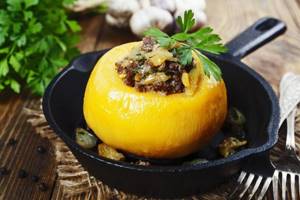
Turnip in folk medicine
Turnip was widely used by our ancestors to treat oral diseases, coughs and other ailments. This vegetable has not lost its relevance in this area even now: products made from the root vegetable are able to fight colds along with medications.
Before use, be sure to take into account the contraindications listed in the text below, so as not to cause harm to your health.
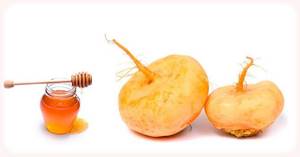
Turnip with honey for the treatment of bronchitis, colds and other diseases
Cough with honey
The product is suitable for treating pregnant women, children aged two years and older. The advantage is the complete absence of harmful preservatives and other additives that manufacturers often add to pharmaceuticals to extend shelf life. To make sweet syrup, prepare everything you need in advance, measure out the ingredients:
- black turnip/one piece;
- liquid honey/one tablespoon.
Step by step steps:
- Rinse the vegetable under hot water and dry it with a towel.
- Cut off the top of the fruit with a knife to create a lid.
- Make a cavity in the turnip (body) with a knife, without removing the tail, so that the resulting syrup does not leak out.
- Take a jar (0.5 liters or less - the size of the root vegetable), pour boiled water, place the turnip.
- Pour the required amount of honey into the cavity, cover with the cut off part in the form of a lid.
- Leave to infuse.
- After six to eight hours, the syrup can be consumed.
- Dosage: for adults – one tablespoon / three times a day; children/one tea/three times a day.
Turnip for diabetes
If you have a type 2 disease, doctors advise eating cooked vegetables and including tops in salads. The vegetable does not affect the numerical value of glucose in the circulatory system, does not contribute to weight gain, and has other properties useful for diabetes.
Turnip for male potency
The root vegetable is distinguished by a high content of B vitamins, which affect the nervous and hormonal systems of the body. The lack of such substances contributes to a decrease in libido. The pronounced anti-inflammatory effect makes turnip useful in the presence of prostatitis.
For toothache
The instant remedy is a solution for rinsing the mouth, and to make it you will need to prepare one fruit.
Step-by-step diagram:
- Wash the vegetable, peel it, and grate it on a fine grater.
- Take two tablespoons of the resulting puree and place it in a saucepan.
- Add boiling water in the amount of two hundred milliliters.
- Place on low heat and simmer for at least fifteen minutes.
- Cool and rinse your mouth.
For high blood pressure
Since the vegetable helps reduce blood pressure, use in the presence of hypotension is highly undesirable. The inclusion of dishes with turnips in the daily diet leads to the strengthening and expansion of the walls of blood vessels and prevents the formation of blood clots.
The nutritional value
Almost half of the periodic table is represented in turnips. This unique vegetable crop contains the antioxidant glucoraphanin, which increases the body's protective functions, regulates blood sugar levels, and also prevents the growth of cancer cells. Organic acids - linoleic, linolenic, oleic, palmitic are responsible for the cellular structure of tissues, ensuring their production and regeneration. Plant fiber has a beneficial effect on the gastrointestinal tract, helps reduce the level of “bad” cholesterol, and removes toxins and waste.
Proteins fats carbohydrates
100 g of Brassica rapa root vegetable contains:
- 1.48 g protein;
- 0.1 g fat;
- 6.18 g carbohydrates;
- 0.26 g starch;
- 1.8 g fiber;
- 0.68 g organic acids;
- 89.5 g water.
Macro- and microelements
Macro- and microelements are necessary to ensure the normal functioning of all body systems: they stimulate hematopoiesis, improve the supply of oxygen to tissues, regulate water balance, help strengthen bones, take part in the metabolism of fats and carbohydrates, protein synthesis, and enzymatic reactions. A person's need for macroelements is measured in grams or milligrams; our body needs much less microelements.
Brassica rapa vegetable contains:
| Macronutrients | mg/100 g | Microelements | mg/100 g |
| Potassium | 238 | Iron | 0,9 |
| Calcium | 50 | Copper | 42 |
| Sodium | 18 | Manganese | 0,4 |
| Magnesium | 17 | Selenium | 55 |
| Sulfur | 32 | Zinc | 0,78 |
| Phosphorus | 34 |
Vitamins
Low molecular weight organic substances, combined into the group of vitamins, are absolutely necessary for the normal functioning of the human body. Most of them are not synthesized in the body, but come from food.
The complex of vitamins in Brassica rapa root vegetables is represented by the following types:
| Name | mg/100 g | Role in the body |
| A (retinol) | 16,9 | Participates in redox processes, normalizes the functioning of the immune system. |
| B1 (thiamine) | 0,05 | Helps strengthen the nervous system. |
| B2 (riboflavin) | 0,04 | Takes part in metabolic processes. |
| E (tocopherol) | 0,09 | A powerful antioxidant that slows down the natural aging process. |
| C (ascorbic acid) | 19,9 | Increases resistance to infectious diseases, participates in cellular regeneration processes. |
| PP (niacin, nicotinic acid) | 0,77 | Participates in protein and carbohydrate metabolism, regulates the amount of cholesterol in the blood. |
| Beta carotene | 0,09 | Provitamin A. |
Due to such a unique composition, turnips can easily be called one of the most useful foods. After Peter I forcibly introduced potatoes into the Russian diet, this vegetable began to be undeservedly forgotten. However, recently, interest in the early-ripening and productive representative of the cabbage species has been revived, which is also facilitated by the widespread passion of people for a healthy lifestyle. Eating such a high-quality dietary product helps strengthen the body and maintain a slim figure without resorting to exhausting diets.
Beneficial features
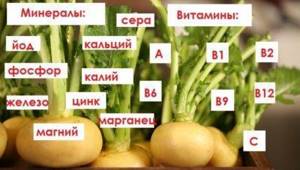
The combination of vitamins and other beneficial components provides a broad positive effect on the human body:
- anti-inflammatory;
- hematopoietic;
- protorachitic;
- diuretic;
- laxative;
- anti-gout;
- promoting weight loss;
- strengthens bones, joints and spine;
- regulating heart function;
- strengthens tooth enamel and suppresses putrefactive microflora;
- anti-cold;
- improves vision, condition of skin, hair, nails;
- normalizing the microflora of the female genital organs;
- fat burning;
- accelerating metabolism;
- hypoglycemic;
- mild sedative.
In addition to the properties described above, turnip is capable of blocking tumor processes in the body due to the content of glucoraphanin , which turns into sulforaphane during chewing.
Therefore, it is useful to use both for the prevention of oncology and during treatment.
Some people confuse turnips with rutabaga and radishes, which are also healthy root vegetables, but are still different from turnips.
Application
We treat gout and rheumatism
Prepare the turnip pulp and add pork fat to it. Apply the ointment to the sore spot. Just be sure to warm it up first.
Healing baths
To prepare turnip broth, you will need chopped root vegetables (2 tablespoons), pour boiling water over everything. You can also use the decoction as a mouth rinse.
Strengthening the tooth
Take crushed turnip tops (a tablespoon), pour boiling water over everything - 200 ml. Everything must be infused for half an hour. Use immediately after meals. This infusion will further strengthen your gums.
Treatment of various disorders
If you have a sore throat, a cold that persists for a long time, or bronchial asthma, drink 50 ml of the decoction. It can also be used to treat toothache.
Are you very worried? Need to calm down? Extract the juice from the turnips, add honey to it and drink before going to bed. Are you worried about insomnia? Turnip decoction will help. It is prepared simply: the root pulp (3 tablespoons) is grated and poured with boiling water (150 ml).
If you don’t know how to protect yourself from hypovitaminosis, atherosclerosis, and improve your vision. It is enough to eat the turnips raw; first you need to grate them. You can make a delicious salad from the product.
Did you hit yourself hard, injure your skin or limb? Boil the turnips and apply them warm to the affected area, wrap everything on top with cling film and secure with a bandage.
Baths for the treatment of eczema
Take about 150 grams of dry turnip leaves, you can take 500 grams of fresh leaves, add 4 liters of water, then add salt (2 tablespoons) and boil. Wait, the broth should brew well and become concentrated. Then you can only add it to a warm bath.
Description
We note that turnips can be grown in different places. It tolerates both dry and hot weather well. If the climate is ideal for it, it does not require special care. The root crop ripens quickly enough – it takes several months. Therefore, you will get the harvest literally in a few seasons.
In Russia there were no potatoes for a long time, but they used turnips - a healthy and tasty root vegetable. Today it is no longer so popular, but nutritionists recommend giving preference to this product for weight loss.
Calorie content and BZHU
Turnips have many varieties.
The classic orange-yellow turnip most often appears on the shelves of shops and markets, but this vegetable can also have a white, black, or purple color of varying intensity. Different varieties of turnips may differ in taste, chemical composition, BJU parameters and calorie content.
Comparison of these indicators in different species
White turnip is the most delicate in taste, and is recommended to be given to children
.
Nutritional and energy value of boiled vegetables
Turnips after cooking are not much more caloric than fresh ones, but the amount of proteins and carbohydrates in it changes noticeably:
However, few people very accurately weigh the amount of turnip for a dish, a multiple of 100 g, in order to ideally calculate its calorie content, and in recipes it is usually measured in pieces
. One turnip weighs from 60 to 200 g in early ripening varieties and up to 700 in large ones.
On the shelves in a vegetable store, mid-season varieties of this vegetable are usually sold, in which one copy of the product weighs approximately 200 g. Accordingly, the above figures reflecting the BJU and calorie content of turnips can be doubled before preparing a dish from it, or use kitchen scales and calculator.
Important:
Before cooking, turnips are kept in hot salted water for 5-10 minutes to remove bitterness.




